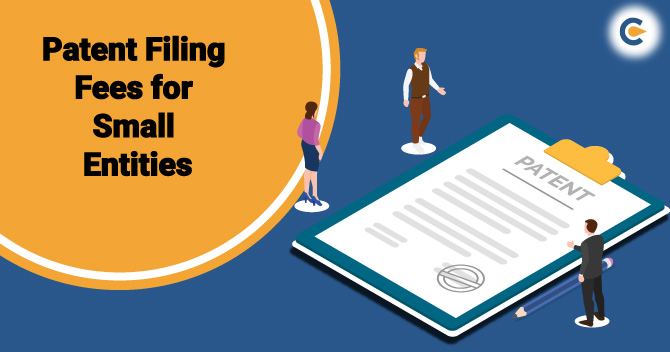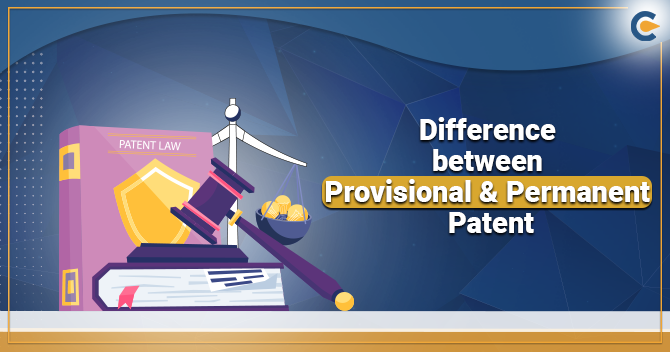An inventor or innovator is given exclusivity over their invention or discovery through the use of a patent, which is a legal document for a specific period of time after which the patent passes in the public domain. An essential component of intellectual property law, patents allows inventors to safeguard their innovations and stop unauthorized use or monetary gain from their inventions. In addition to giving businesses a competitive edge, stimulating innovation, and easing the transfer of information and technology, patents can be incredibly beneficial for both individuals and corporations. Scroll down to check the top 5 Patent Search Engines and Databases.
What is Patent Searching?
To determine the novelty and inventiveness of the new idea or invention, patent searching is carried out, which refers to a process of looking up and examining already issued patents. This entails performing an extensive search of databases, patent offices, and other sources to find any patents already in existence that are identical to or comparable to the proposed invention.
An inventor’s novelty and inventiveness are evaluated through patent searches, along with any possible barriers and market competitors. A patent search can help entrepreneurs and inventors focus their focus on creating novel and innovative solutions rather than spending time, money and resources on ideas and innovations that have already been patented. Also, conducting a patent search can help assess an invention’s potential worth, spot industry trends, and guide research and development efforts. It is an essential tool for whoever wants to protect their intellectual property and ensure that their ideas are truly unique and valuable.
What are Patent Search Engines and Databases?
Online resources like patent search engines and databases are designed to make it easier for individuals and companies to find and access information about patents. Patents are legal papers that provide inventors and their inventions exclusive rights. For individuals and companies who want to protect their intellectual property, patent search engines and databases are essential sources for conducting market research or simply keeping up with the latest development in their field.
Users can often search for patents using keywords, inventor names, patent numbers or other patent criteria utilizing patent search engines and databases. Besides this patent, search engines and databases can also be used for sorting, filtering and classification to assist users in locating the data they want more quickly. To assist users in keeping informed of the most recent advancements in their profession, certain search engines and databases can additionally provide advanced tools like visual analysis, citation monitoring or patent alerts.
Top Five Patent Search Engines and Databases
Following are the top 5 Patent Search Engines and Databases:


InPASS – Indian Patent Advanced Search System
The Indian patent office has developed the Indian Patent Advanced Search System (InPASS), an online tool, to make searching and analyzing patents easier. Based on the number of parameters, the system enables the users to conduct a detailed and accurate search for Indian patents and patent applications.
One of the world’s oldest patent offices, the Indian Patent Office is situated in Delhi and dates back to 1908. The Indian Patent Act[1] was passed in 1970, and since then, it has undergone numerous revisions. The website for IP India is also known as InPASS or Indian Patent Advanced Search System. It makes it possible to search for patents based on the filing date, publication, grant, etc. With the use of this website, one can conduct a free patent search or an advanced patent search in India. There are numerous ways to conduct a patent search, including using a keyword-based search, an application number, a publication number, a grant number, etc.
Features and benefits of the Indian Patent Advanced Search System (InPASS)
- Comprehensive Search Criteria: IPASS allows users to search for patents based on a variety of criteria, including inventor name, applicant name, title, abstract, priority date, and application number, among others.
- Boolean Search: The platform also offers a Boolean search option that enables users to use logical operators such as AND, OR, and NOT to refine their search results.
- Image Search: IPASS allows users to search for patents using image files. This feature is handy when searching for design patents.
- Time-Saving: IPASS is a tool that allows users too quickly and easily search for relevant patents, reducing the time and effort required for manual searches.
- Accuracy: The system provides accurate and up-to-date information on Indian patents and patent applications, ensuring that users have access to the most reliable data.
- Cost-Effective: IPASS is a cost-effective solution for patent searching and analysis, as it eliminates the need for expensive third-party databases.
- Easy To Use: The platform is user-friendly and does not require specialized knowledge or training to use effectively.
Google Patents
Anyone can look for patents and applications from around the world using Google Patents, a free patent search engine and database. It was introduced by Google in 2006 as a part of its commitment to improving public understanding and access to patents. Google Patents’ user-friendly layout, advanced search functions, and connection with other Google services are just a few of the features and advantages that make it a popular choice for patent searchers.
It’s a crucial software tool for IP law firms because not all patent search engines offer comprehensive novelty searches for potential patents. Thus it’s wise to always double-check with Google Patents. Just typing the appropriate patent name into Google Search will do the trick. Following that, the first result that appears is frequently a direct link to the patent. The enormous Google Patents database contains 87 million patents from nations including the United States, China, Japan, Korea, and Europe.
Features and Benefits of Google Patents:
- Advanced Search Capabilities: Google Patents provides advanced search options that let users focus their results based on a variety of factors, including keyword, patent number, inventor, assignee, and more. Also, users may restrict their search results by date, status, and kind of patent.
- User-Friendly Interface: Even individuals who are unfamiliar with patent searching can easily navigate Google Patents’ simple and intuitive user interface. The search results are shown in an orderly and clear format with clear descriptions and helpful visuals.
- Integration with Google Services: Google Patents is connected with other Google products, like Google Scholar and Google Translate, enabling users to access more data and sources for their patent search.
- Global Coverage: In addition to the United States, Europe, China, Japan, and many other nations, Google Patents provides coverage for patents and patent applications from all around the world.
- Free Access: As Google Patents is entirely free to use, people, companies, and organizations of all sizes frequently choose it.
Patent Scope
Patent Scope is an online patent search engine and database that offers a comprehensive search platform for patent and patent applications from all around the world. The World Intellectual Property Organization (WIPO) has developed this and maintains it as well. Patent Scope gives users access to more than millions of patent records from more than 100 nations. In-depth searches and analyses of patents are made more accessible for users using Patent Scope, which supports their research, innovation and business activities.
This database offers easy, advanced field combinations and multilingual expansion options. Searches can be done using simple search terms like name, date, international classification, etc. The following headings are included in field combination, and they can be used to execute searches: Combining Booleans and WIPO publication, application, and other numbers. All international Patent Co-operation Treaty (PCT) applications are now fully searchable in this browser-based patent database. In this database, the patent documents filed by additional collaborating regional patent authorities have also been incorporated. International patents, also referred to as PCT patents are recognized by a number of nations.
Features and Benefits of PatentScope:
- Global Coverage: PatentScope gives users access to an extensive collection of patent documents from more than 100 nations, including PCT applications, documents from regional and national patent offices, and patents from the World Intellectual Property Organization (WIPO). This makes it the perfect tool for doing global, in-depth searches of patent materials.
- Advanced Search Options: PatentScope offers advanced search options that let users choose numerous search parameters, such as the kind of patent, applicant name, inventor name, patent classification, and publication date, to target their findings more. Users can create complex search queries and save them for later use because of the search options’ flexibility and customizability.
- Multilingual Interface: PatentScope’s interface is available in English, French, Spanish, Chinese, Arabic, and Russian, among other languages. This tool makes it easier for non-English speaking users to do patent searches and analyses in their local language.
- Legal Status Information: PatentScope offers details on the legal state of patent applications, including their present situation, earlier developments, and maintenance activities. Researchers, patent agents, and attorneys can utilize this information to monitor the progress of a patent and identify cases of possible infringement or licensing.
Espacenet
Access to patent applications from all over the world is available through the free-to-use patent database and search engine Espacenet. More than 120 million patent records, including issued patents and patent applications, are contained in this database, which is maintained by the European Patent Office (EPO). More than a hundred nations, including the US, Europe, and Asia, are represented in the database of patent documents.
Full-text searches in English, French, or German are available for this database. Smart search, advanced search, and Classifier search are the three search methods available. The user can do a search via the advanced search using a variety of headings, including title, abstract, publication number, etc. The categorization search feature enables users to look for a certain class. More than 90 million patent documents from throughout the world are accessible to you through Espacenet. If you are searching for patents from countries other than the US, it even offers a handy translation tool that will be helpful.
Features and benefits of Espacenet:
- Advanced Search Options: Espacenet offers a number of advanced search options that let users look for patents using a variety of parameters, including keywords, applicants, inventions and more. Users can quickly locate the relevant patent applications by filtering the search results by date, language and country.
- Espacenet offers patent family information that enables users to find related patents that have been filed in several nations. This function is beneficial when looking for suspected infringers or when conducting a comprehensive patentable search. Espacenet offers consumers the ability to verify the status of a patent application or awarded patent by providing legal status information for a patent. Users can use this information to find possible rivals or patents that might be available for licensing.
- Patent Family Information: Espacenet provides patent family information, which helps users identify related patents filed in different countries. This feature is particularly useful for identifying potential infringements or for conducting a thorough patentability search.
- Legal Status Information: Espacenet provides legal status information for patents, allowing users to check the status of a patent application or granted patent. This information can help users identify potential competitors or patents that may be available for licensing.
- Machine Translation: Espacenet offers a machine translation feature, which allows users to translate patent documents into their preferred language. This feature is particularly useful for non-native speakers who may need help understanding patent documents in their original language.
- Export Functionality: Espacenet allows users to export search results in various formats, including PDF, CSV, and Excel. This feature makes it easy for users to analyze and share patent search results with others.
The Lens Org
The Lens Org is one of the earliest digital patent searching databases, and it is something that all patent lawyers should be familiar with. Incorporating information from the world’s top patent authorities, such as the United States Patent and Trademark Office (USPTO), the World Intellectual Property Organization (WIPO), and the European Patent Office, it is an open database (EPO).
The lens is a free scholarly search and citation index tool based on open-source data provided by Cambia, an Australian non-profit organization. Advanced searching, native language searching and visualization of information are possible. It is fast and easy to use. Further, it combines patent, sequence and NPL data making it an attractive proposition as a discovery and analytics tool. Registering for a free account also allows you to access some additional features such as saved searches and reports.
The Lens Org has a vast and extensive database to search from, along with several kinds of metadata searchability from publication, filing and priority dates, and extended patent family sizes. The database is helpful for patent attorneys who are looking for a user-friendly and easily accessible universal patent database.
Patent Searching Tips
There are a few tips and suggestions that can help in finding the most relevant and helpful information during a patent search. Following are some tips:
- Utilize Many Databases: To acquire a complete picture of the patent landscape, use several databases, as different databases can produce different search results.
- Boolean Operators: Use Boolean operators to narrow your search and produce more precise results. Boolean operators include AND, OR, and NOT.
- Use Specific Search Terms: Instead of using broad search terms that may produce useless search results, use precise search terms that are related to your idea.
- Examine Classification Codes: You can use classification codes to identify patents in a particular technological field and to help you focus your search.
- Look at Cited Patents: You can find essential patents in your field by looking at patents that have been cited in other patents.
- Use Synonyms: To expand your search and include patents that utilize alternative terminology, use synonyms for your search phrases.
- Look past The Abstract: For a complete understanding of the idea, don’t only rely on the patent abstract; read the entire document.
Other Patent Search Engines and Databases
There are many other paid or free patent search engines and databases which perform similar functions like:
- The United States Patent and Trademark Office Database
- Free Patents Online
- Common Citation Document
- SumoBrain
- Patent Buddy
- Octimine
- Orbit
- Thomson Innovation
- PatBase
- Derwent World Patent Index (DWPI)
- WIPS Global Advanced
- Innography
- MaxVal Patent Tools
- Petapator
- PatSnap
Benefits of Patent Searching
- Helps identify the competition and potential obstacles in the market.
- Determines novelty and inventiveness of an idea or invention.
- Provides valuable information on state of the art in a given field.
- Guides research and development efforts.
- Evaluates the potential value of an invention.
- Helps prevent infringement of existing patents.
- Saves time and money by avoiding the costly development of an already patented idea.
- Protects and enhances the value of the intellectual property.
Conclusion
In conclusion, searching for a patent is a crucial procedure for inventors, business owners, and anybody else trying to safeguard and market their concepts or creations. Individuals can prevent the expensive development of an already patented notion by doing a comprehensive patent search, which will help them discover potential barriers and rivals, as well as assess the novelty and ingenuity of their idea or innovation. Moreover, patent searching aids in the prevention of unintended patent infringement, offers useful data on state of the art in a particular subject and directs research and development activities. Moreover, it safeguards and raises the value of the intellectual property, which is essential for companies and people seeking success in today’s cutthroat market. In general, individuals can make knowledgeable choices about their intellectual property, spot chances for innovation and growth, and maximize the value of their ideas and innovations by knowing the significance and advantages of patent searches.
Read Our Article: Patent Searching – Weighing The Risks And Rewards











